JAN BERRY’S SECOND WAVE
A Conversation with Associate Producer Rob Kuropatwa
By Mark A. Moore
Author of The Jan & Dean Record
After the limited release of Jan & Dean’s Port to Paradise album in 1986, Jan Berry forged ahead with new solo material. By 1988 he had begun writing “She’s Dancing, Dancing” with Sandy St. John (wife of Dick & Dee Dee’s Dick St. John), and “Love Her Tonight” with Jeff Solomon.
Jan’s subsequent connection with a young singer-songwriter named Rob Kuropatwa forged a creative partnership that would eventually lead to Jan’s solo album Second Wave, released on One Way Records in 1997. People magazine covered the album’s debut in August of ‘97. Jan passed away on March 26, 2004, and a Memorial Edition of Second Wave was issued to coincide with Jan’s Celebration of Life, a rousing party held at the Roxy Theatre in Hollywood, California. Everyone who attended—including many of Jan’s friends, family, and professional colleagues—received a copy of the Memorial Edition, which included new packaging and a 16-page booklet printed by Rainbo Records in Santa Monica. With the release of the 20th Anniversary Edition by Wounded Bird Records on May 4, 2018—the album’s third incarnation, featuring two new bonus tracks—I asked Rob to share some insight on the project, and on working with Jan in the studio.

Mark A. Moore: You transitioned from working with the controversial Dr. Eugene Landy and Brian Wilson to writing songs and recording with Jan Berry. What’s the timeframe on that, and how did you connect with Jan’s father, Bill Berry?
Rob Kuropatwa: I moved out to L.A. when Dr. Landy offered me a job as Brian’s personal assistant, working alongside Kevin Leslie, Brian’s other assistant. Soon after joining that team I realized things were heading south pretty quickly for Landy and his association with Brian, and I decided I didn’t want to be part of that scene. Already in L.A., I thought it would be a good idea to meet with Jan (and perhaps Dean), sharing some original songs with him and perhaps even working together one day on a project. This happened somewhere within a few weeks after I left the Landy scene. I found a William Berry in the phone book, thought it was Jan, and decided to give him a call. Turned out it was Jan’s dad, Bill, and he was interested in meeting me. He told me Jan wouldn’t be interested in meeting and discussing a possible project, so we happened to meet up at Bill’s Bel Air home by ‘chance’ when Jan was going to be there as well. Many members of Jan’s family were there. It was sort of like an interrogation session with us all sitting in a giant circle. But knowing how Jan had been taken advantage of over the years I fully understood why they wanted to know who I was and what my intentions were.

MM: From the very beginning, Jan had always written his arrangements out note for note before booking studio time. The bass lines on all the classic hits and album cuts from the ‘60s were fully notated (the parts heard on the records), in addition to the parts for drums, percussion, brass, woodwinds, and strings. The Danelectro six-string bass guitar parts, written in the treble clef, doubled the bass lines for the most part. The lead and rhythm guitar and keyboard players were given chord charts, with occasional lead licks fully notated. Jan continued this process after his 1966 car accident, from Carnival of Sound (1967-68) through the Ode and A&M singles (1969-78), “Rock City” with the Aloha Band (1984), Port to Paradise (1986), and Second Wave (1988-1997). Most of Jan’s original music scores and charts still exist today, including for Second Wave. Can you give readers an idea of how Jan’s arrangement process worked during the time you collaborated with him?
RK: Jan really was a control freak when it came to figuring out everyone’s parts in the studio, and figuring that out ahead of time. He was very focused, very precise, and was still at the top of his game when we were doing this. I often thought to myself how remarkable it was that he was capable of arranging the new songs we were creating, and to the degree to which he was arranging them—vocal parts, instrumental parts, and even the sequence of the different parts of each song. Jan and I would do a lot of pre-production work in his home [on Westgate Avenue], staying up until 2:00 or 3:00 in the morning, with him writing most of the parts with his left hand, sometimes playing them on the piano himself and sometimes asking me to play them.
After we did the instrumental tracking session for several of the album’s first songs Jan asked me to lay down a guide vocal so he could practice his vocal, along with mine, to be recorded at a later session date. I was thrilled to be asked to do this because when I was in high school I used to sing along to Jan’s records almost religiously, trying to impersonate exactly how he’d hit each note and pronounce each word on those hit recordings. I did my best pre-1966 Jan impression on those guide vocals and Jan loved them, wanting to go up to play a rough mix of the tracks for his parents. As a joke, he told me he wanted to see if they could tell it was him on the lead vocals and not to let them know it was me singing, and I played along. Bill Berry was very happy with the recordings and commented that Jan sounded very good on them, eventually asking if it was actually Jan singing. Jan kept up the ruse until the time we left Bill’s house, eventually letting him in on the secret. We all had a good laugh about it, and soon Jan was ready to record the vocals himself after much practice and determination.

MM: I interviewed Ron Jeffrey, who handled programming for the album. Ron explained that he and engineer Mark Wolfson worked as beta testers for a music software and hardware company. They used one of the company’s new digital editors and recorders to adjust the pitch on some of Jan’s vocals. They were among the first to use the technology. That process soon became commonplace among major artists in the music industry—artists who didn’t have Jan’s brain-related limitations—but it was cutting edge at the time. What system was used, and what was Jan’s reaction to it?
RK: The system was called ADAP [Analog Digital Audio Processor], and Ron was really good at using the software to get Jan’s vocals to where we all wanted them to sound, including Jan. Jan was a trooper about doing take after take in the studio, sometimes line by line, so there wouldn’t need to be too much digital fixing going on. After we had enough good takes to work with we’d sometimes clean up the pronunciation of a word, work on the timing of a phrase, or help the vocal be closer in pitch to what Jan intended. He actually sang in tune quite well, but this made things sound even better. Jan wanted things to sound the best they could, and if that meant tweaking the lead vocals, he thought that was a good idea. The only track on Second Wave which didn’t feature any ADAP editing is the “31 Flavors, 31 Years” commercial. What you hear there is 100% Jan & Dean, no post-production editing.

MM: Backing vocalists Jon Joyce and Joe Chemay had sung on Dennis Wilson’s solo album Pacific Ocean Blue (Caribou 1977) and Pink Floyd’s The Wall (Columbia 1979), among many other well-known projects. While the Blossoms had recorded on a few of the early Jan & Dean tracks, Jan consistently used prominent female backing vocalists throughout his solo career in the 1970s, and he continued that trend with his arrangements for Second Wave. Susan Boyd [Joyce], another well-known session veteran, did a terrific job on the album. Did Jan have specific vocalists in mind for the project?
RK: I don’t believe so, although he did have particular arrangements in mind. I’m not sure how we wound up working with Jon Joyce, who also served as contractor for all four harmony singers. It might have been through Mark Wolfson or someone else working on the project. They were great, and were quite happy singing the arrangements exactly as Jan and I created them on each score, note for note. I suggested that Susan [Boyd Joyce], the sole female harmony singer, be placed at the top [of the harmony stack] because that’s where her range naturally fit best, but Jan was adamant about her singing second tenor, not first. He liked it when a male voice would sing the top parts in falsetto (like he’d asked Dean to do), but have a strong female voice right under him in the lineup. I’m not sure why he liked it like this, maybe because having a female singer on that part made it possible to have those higher notes (which are usually at the cusp between full and falsetto voice) sung in full strength.

MM: Some of the original Wrecking Crew musicians who had played on Jan’s original productions for Jan & Dean in the ‘60s participated on the album, including saxophonists Plas Johnson and Jay Migliori, and guitarist Don Peake, who also did some engineering work for Second Wave. I interviewed some of the younger musicians who played on the album. To a man, they remembered Jan coming out from the control room to talk to them, encourage them, and tell them what he liked about what he was hearing. What do you remember about Jan’s interaction with the session players? He ran a tight ship in the ‘60s. What was it like in the ‘80s and ‘90s?
RK: One of the biggest challenges we had in producing the album together was his insistence on the musicians sticking to the parts as he wrote them, note for note. I had interned with producer Rick Nowels for a few months and was really impressed with the musicians he chose to work on Belinda Carlisle’s #1 single “Heaven Is a Place on Earth” [MCA 1987]. It sounded like a 1980s take on Phil Spector to me. I suggested to Jan that by hiring these top-rate musicians it would be a good idea to let them use his charts as a starting point and to give them the freedom to play what they thought would be best for each song. Jan and I argued quite a bit about this, as we had different approaches here. I thought, these guys (and gals) are playing on #1 hits on the radio today, and are being paid triple-scale. Let’s let them do their thing! And Jan wanted them to play exactly what he and I had arranged in advance. Ultimately Jan was willing to compromise, as we were able to ask the musicians to first play the music as we arranged it, but let them know it would be okay for them to take some artistic liberties if they thought it would improve the end result. While at first he was reluctant to have the musicians (and singers) stray from the charts he created, he was thrilled with what they were able to do and let them interpret the parts as they individually saw fit.
MM: It’s actually pretty similar to how Jan operated in the ‘60s. In my conversations with engineers Bones Howe and Lanky Linstrot, and with drummer Hal Blaine and other musicians, they confirmed that Jan would accept a good idea if he liked it. But he really encouraged creativity from the multiple guitar players. They worked with him until Jan honed a signature sound that he used repeatedly in his productions. In the scores he would often write “J&D Shtick” or “J&D Usual” for the guitarists, and they knew what he meant. And if any of the parts for any instrument changed during the recording process, they would mark the charts in the studio—Hal and fellow drummer Earl Palmer, for example, because they played together in unison. But beyond minor tweaks, Hal confirmed that they otherwise all played what was written.

MM: You once told me that Jan would segue from being laid back in the studio—a scenario unheard of during his pre-accident career—to a very hands-on approach during the production process. Can you give us an example of the latter?
RK: Jan would do this when a musician was straying too far from what Jan’s original intention was for a part, or even when the musician’s interpretation of the chart wasn’t played as Jan heard the part in his head. There was a good degree of polite back-and-forth with Plas Johnson, for instance, when Plas would play a bit behind the beat and Jan would ask him to play more with the beat, more aggressively. Plas is one of the best saxophone players of his generation, and spent most of his career playing on jazz records, which wasn’t necessarily the approach Jan was looking for. You could see they respected each other’s opinions immensely. Jan really didn’t want to tell Plas how to play his part, and Plas didn’t really want to tell Jan he didn’t think that’s how it should be played. But they were able to get a final take on each song that I believe they were both pleased with.
MM: They went back a long way. Plas Johnson had played sax on some of Jan & Arnie’s recordings in 1958, and on a number of Jan & Dean’s records. The horn parts were of course written out note for note—beginning in late ’62 Jan always put brass and woodwinds together, never one or the other—but the sax solos were not notated. For example, the wailing sax solo on Jan & Dean’s 1961 recording of “Barbara Ann” (released as an album cut in ’62). Same for “Sidewalk Surfin’” in ’64.

MM: Jan had kept up with the times, and insisted on including rap segments in some of the songs. My personal opinion is that it would have worked better if he had scored an authentic rapper as a guest artist. I know you were less enthusiastic about that aspect, but Jan of course had the final say. How did he communicate his ideas for those segments?
RK: Jan really believed his songs would sound more current if they included rap sections in them, and we had long conversations about this. As you know, I didn’t think this was a good idea, as there isn’t a whole lot of crossover between fans of rap and Jan’s music, and I thought it would be a big fail. Why mix these two genres? Looking back now I realize it was Jan experimenting the way he did in the ‘60s, like with the work he did on Filet of Soul and with Batman, to name two unusual projects. He didn’t see this as gimmicky. He just thought it was a good and interesting thing to do. So he asked me to write the rap segments for the re-recording of “Spring Break,” as well as one or two of the other original songs (Jeff Solomon wrote the rap verses for “So Here I Go Again” previously).
I’m not sure how Jan decided to hire Randy Crenshaw to do the rap parts. I thought it was odd he wasn’t going to ask a known rapper to do this, but maybe in his mind it was better having an unexpected person doing this to bridge that rap/rock abyss.

MM: Jan was focused primarily on writing new material for the project, but he ended up taking friend and former manager Lou Adler’s advice on including some re-recordings of Jan & Dean’s original hits. I guess the thinking was that rehashing the hits—something Dean Torrence had already done extensively—might get more record buyers to listen to the new material. And it’s no surprise that Jan also chose to cover “Get a Job,” originally a #1 hit for the Silhouettes in 1958. It was one of several oldies Jan had been tinkering with in the month before his car accident on April 12, 1966. It’s worth noting that Jan did not use his original ‘60s arrangements for these re-recordings. They’re different, instrumentally. The bass lines are different, more basic, with extended guitar breaks, and of course a few lyrical changes. In 1989 Jan got written permission from co-writers Brian Wilson and Roger Christian to tweak the lyrics and add the instrumental breaks. What do you remember about Jan’s take on these re-recordings? Given Dean’s previous output on that front, I was surprised that Jan went through with them.
RK: Jan knew all along he wanted to record “Get a Job” as part of this project, although he never shared with me why. When Lou suggested to Jan that he re-record his hits I don’t think he was suggesting he should make them sound like new recordings, as most artists try to replicate the sound of their earlier hits as closely as possible for the sake of trying to license the new recordings for release on future compilations (which is what Dean was able to do). I think Jan saw this as an opportunity to update these classics and didn’t want to be bound to the originals. He also held Lou’s opinions in high regard and wanted to follow Lou’s guidance on this, even if the end result wasn’t what Lou might have been suggesting.
Jan also asked me if I would write a new verse for “Surf City,” “Honolulu Lulu,” and “Little Old Lady.” I didn’t feel any more comfortable writing new verses for these classics than I did writing rap, but Jan kept encouraging me to see what I could come up with, and it seemed to be exactly what he was hoping it would be. I actually asked him to sign a legal document that stated I would not be given credit (or blame) for any of these new verses. While they turned out okay, I don’t believe they were necessary. Leave a classic recording alone.
It was really sad seeing Roger Christian in the shape he was in. We went to his home in the Valley to seek his approval for letting Jan receive writer’s credit for “Little Old Lady,” which he agreed to. The 1964-era promo picture of himself on display didn’t resemble, in any way, the man we’d come to see. Just a few months after we’d seen him he passed away—a really sad situation. [Jan’s old friend and collaborator Roger Christian, suffering from kidney and liver failure, committed suicide at the age of 57 on July 11, 1991. Jan’s songwriting credit for “The Little Old Lady (from Pasadena)” was legally restored in January 2002].

MM: During his work on the album, Jan married Gertie Filip in 1991. I know she worried about Jan spending too much money in the studio. But at the same time, Jan brought her into the creative process and she co-wrote two songs that were included on the album. From your perspective, how did Gertie affect Jan’s approach to the project?
RK: Gertie played a stabilizing role in Jan’s life, and he was much better off as a result of their relationship. It was apparent, however, that things would be different from that point forward with regard to pre-production work and studio work. This was mostly good, in that Jan had to plan more before going in to record, which saved a good deal of money. But it was challenging in that Jan’s spontaneous approach to working on music, with and without me involved, needed to be redirected.

MM: The ballad “Love Her Tonight” is one of the best tracks on the album, and is reminiscent of Jan’s “How-How I Love Her” (A&M 1978), one of the finest efforts of his solo career in the ‘70s. How conscious were you of Jan’s earlier solo material when you began working with him?
RK: Thanks Mark, I appreciate that. “Love Her Tonight” is one of my favorite tracks as well, and I love the arrangement and real instruments we used when recording that track. While I was familiar with all of the earlier hits, I was only somewhat familiar with Jan’s solo work, mostly because the source where we can easily find these things today (the Internet) didn’t exist back then for the public. I’d heard some of those songs over the years on bootleg recordings and realized Jan was capable of continuing to write, sing, and produce good music—which is what made me think we could begin a new project together in the ‘80s.

MM: Tell us the story of the Baskin-Robbins Ice Cream jingle, “31 Flavors, 31 Years,” featuring Jan with Dean Torrence. How did that come about?
RK: I had heard that year that Jan & Dean were starting their 31st year as a duo, and immediately I thought of Baskin-Robbins and their connection with that number. I spoke with a man in their advertising division about this idea and he loved it, encouraging me to write the jingle and have Jan & Dean record it. I finished it up, using the promotional line they were using at the time, “now there’s more to love us for,” and we recorded it gratis, thanks to the generosity of a major Hollywood studio which donated the hours between 11:00 p.m. and 8:00 a.m. to us to record the song. Rod Stewart was in the next studio working on his new album, looking exactly as you’d expect him to look, even at 4:00 a.m., and he checked out our session through the studio door window. We laid down the instrumental tracks. Dean added his lead vocal, and then stacked a bunch of harmonies to thicken up the sound, and then Jan added his lead vocal and a low harmony as well. It was a lot of work to knock it all out in the middle of the night, but it worked!
I sent the recording to the guy at Baskin-Robbins and he told me he loved it and wanted to proceed. But shortly afterward he told me they were unable to use the jingle (and the tie-in with Jan & Dean) because they had an exclusive advertising contract with a major ad agency in town and would be sued for accepting material from an outside source. Oh well. At least the fans were able to hear their last studio recording together as a bonus track on Second Wave.

MM: The album was recorded in a number of different studios around Los Angeles, and at Al Jardine’s Red Barn complex in Big Sur. It sort of progressed in fits and starts, and then you moved away from California. You consulted long distance as Don Peake helped Jan put the finishing touches on “Hawaiian Isles,” an updated version of “Hawaiian Mirage” from Port to Paradise. Given the disparate studios, it was a challenge to present a consistent sound. How did you address that situation during the mastering process?
RK: That’s a great question. Unfortunately the approach used by the studio that mastered Second Wave the first time [1997] was to add some compression, limiting the dynamic range of the recordings. I thought the end result was sort of shrill, and instead of helping increase the sound quality of “Hawaiian Mirage” they had taken down the sound quality of all the other recordings. It was very frustrating, as I was in New York at that point and couldn’t be there in person to help oversee that process. Some folks in online forums have stated they like the songs but wish the sound quality was better, and I totally agree. When I listen to Second Wave I listen to the digital copy I have of the master tape, uncompressed and with full EQ and dynamic range. It’s awesome, and I wish it was what everyone else could experience.
MM: Well, that just confirms that we’ll eventually need a fourth re-issue of the album, so we can hear everything with less compression.
RK: Hmmm . . . Perhaps a digital release in the future will be able to provide help in this area.
MM: The bonus track featuring the unreleased original version of “Spring Break” is the highlight of this reissue. It’s in a different key, with Jan singing in a higher register—and it works. Jan’s tenor vocals for Jan & Dean, and even his solo work in the ‘70s, had always been near the range of his speaking voice. But this lead vocal soars above that range and offers something we wouldn’t normally expect to hear from Jan. It was a good range for him at that stage of his career. It’s almost Billy Joel-esque in places. And I should note that the timbre of Jan’s singing voice changed in the ‘80s, making him sound different from his ‘70s work. Why was this version of “Spring Break” shelved?
RK: I loved how the original version of “Spring Break” sounded, thinking it was the most energetic and exciting song on the album at the time. We proceeded to record more songs for Second Wave, and about a year or two into the process Jan told me he wanted to re-record that song for the album. Jan felt his vocal sounded artificially high in that key, and I think he was concerned the fans would think it had been tinkered with too much to make it work. The original version was the way I wanted that song to sound, and the remake was what Jan heard in his head for what it should sound like, including the added rap sections. I was never happy with the way the remake sounded. I thought it was lacking energy and a sense of urgency compared to the original. We recorded most of Jan’s lead vocals for the remake in a setup we put together in his house, and I think that’s part of why his vocals didn’t sound as pumped up as they did on the songs he sang in an outside studio. There are lots of differences between the recordings, as you’ve pointed out. I’m really pleased the original version’s seen the light of day!

MM: It’s great to have the bonus material, and to have the album available commercially again.
RK: It was such a wonderful experience working with and being friends with Jan during the five years we worked together closely on this project. He always wanted things to be the best he thought they could be, and worked very, very hard to achieve that level of greatness. What an inspiring and talented man he was, including during his post-1966 life.
This project initially came about as the result of my desire to help Jan make new music. We didn’t know each other previously. I didn’t have a track record as a producer or writer. I just wanted to create something great with someone I truly admired. I’m thankful for the chance Jan (and his dad) took in letting things come together as they did, and I believe Jan was really proud of what he ultimately was able to do on this record. Mission accomplished, I hope.

Rob Kuropatwa is a private music teacher, director of an in-home arts education company based in Atlanta, and a super-proud dad.
Second Wave — 20th Anniversary Edition
Wounded Bird Records, WOU 4524
(Buy the Album)
© Mark A. Moore. All rights reserved.
Follow in Social Media: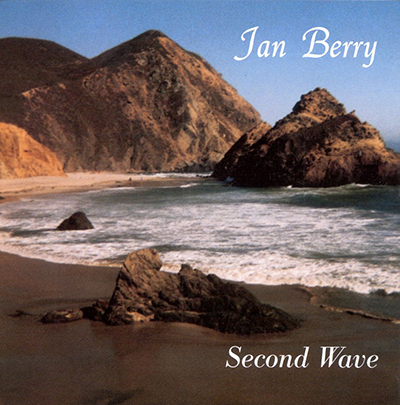
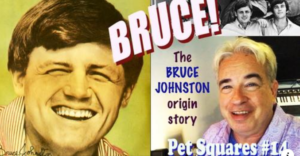
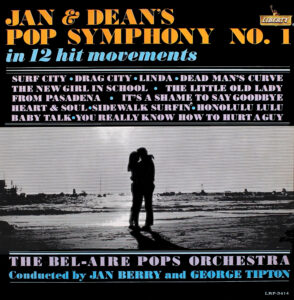
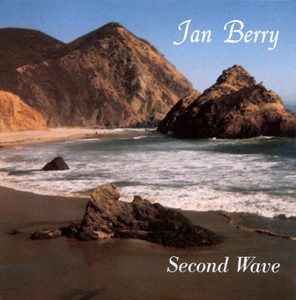
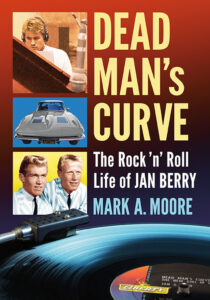
No vinyl for this one. It was originally released on CD, as was the re-issue. And Rob Kuropatwa has mentioned the possibility of a digital release.
Was this released on vinyl?